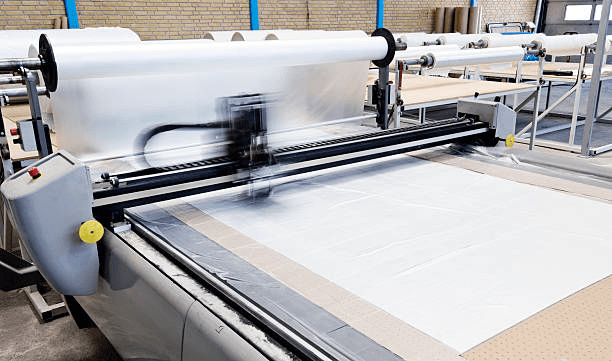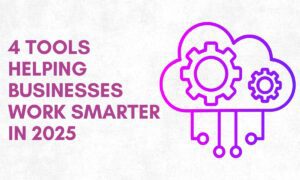Operational effectiveness, accuracy, and consistency are key components in B2B manufacturing. They are important in all segments, spanning automotive, electronics, and textiles. Cutting machines are critical in processing, shaping, and transforming raw materials to quality components. Advanced cutting technologies are facilitating these businesses to scale, reduce physical and material wastes, and adapt to clients expectations in a timely manner.
This article looks into the chronological cutting machine innovations to fulfill B2B needs industries have, features of interest of industrial cutting applications, and how partners, for example, KTETGROUP are providing solutions designed for international manufacturers.
If you are interested in sophisticated slitting and cutting machines, check out https://www.ketegroup.com/pt/product-category/slitting-machine/
The Strategic Importance of Cutting Machines in B2B Manufacturing Sectors
In most industrial activities, the cutting machines stand out as one of the most important equipment. Their position and the utilization that they give can be placed in between materials servicing and the final assembly. They are important in packaging, converting, label production, electronics, and film manufacturing industries.
B2B cutting machines for industrial segments provide the following functions.
- High throughput: Machines have the ability to be operated 24/7, ensuring continuous production and scaling business operations.
- Achievable Accuracy: Important for enabling seamless compatibility between parts and minimizing quality control issues.
- Resource Waste Minimization: Important in expensive material environments as it cuts down on scrapped materials and improves utilization rates.
- Flexibility: Modern systems are able to process several substrates including plastic film, paper, textiles, aluminum foil, and laminates.
Cutting machines help retain an organization’s competitiveness by minimizing errors during production. The machines help ensure materials are cut to the exact dimensions, which helps eliminate precision errors throughout the production process. The machinery is crucial in lean operations and customization for businesses.
Different Types of Cutting Machines and Their Uses
A significant modernization of B2B industrial processes has occurred in the last two decades. Businesses have to balance meeting production goals, material types, and even the intended usage of the products. The following are some of the most common types of cutting machines used in the industrial sector:
Slitting Machines
Slitting machines are used for longitudinal cutting of broad materials. These are crucial for the paper, film, and foil industries. Slitting operations can be rewind slitting or log slit depending on the output type required.
The advanced slitting machine models offered by KTETGROUP incorporate tension control, digital positioning, and high-speed automation, which makes them appropriate for industrial scale operations.
Die Cutting Machines
These devices create complex shapes through sequential operations with the aid of specific dies and they find applications in packaging, automotive gaskets and electronic parts. Die cutting is classified as either flatbed, rotary, or digital, according to the thickness of the material and the complexity of the shape.
Guillotine Cutters
These vertically-aligned cutting devices bring high accuracy to cutting. They are extensively applied in the paper and printing industries to provide precision linear trimming of sheets. Often they are used in automated assembly lines to complete the trimming of documents in bulk or the cutting of large scale print media.
Laser Cutting Machines
With laser technology being widely adopted, industries such as electronics, plastics, and light metals have benefitted the most. Its main advantage is precision and the capability of lasers to make cuts in intricate shapes without any physical contact.
Waterjet and Plasma Cutters
More often than not, these are used in heavy industry. They are widely adopted in B2B manufacturing for thick metals as well as composite materials. They are often placed at cutting centers due to their no heat affected cutting zones which make them ideal for sensitive materials.
B2B operations, regardless of the methods used, appreciate machines designed for cutting and slitting with minimal maintenance, automation, and repeatability features. Features that KTETGROUP integrates into braces of its cutting and slitting equipment.
Factors to Consider When Selecting a Cutting Machine
Like any other asset, a B2B cutting solution requires a key decision making framework, several key factors need internal matching configuration:
Type of Materials
Ensure the types of material that need processing are aligned with the machine’s capabilities – film, foil, rubber, paper, and plastic. Composition of several layers or coated materials may need special blades or control systems.
Rates of Work and Output Capacity
Machines designed for high volume processes need to run non-stop and at high speed. Accuracy must be maintained while output velocity must not degrade. Look for specifications on feet-per-minute (FPM) or meters-per-minute (MPM).
Control of The Edge and Tension
In particular, for slitting machines, control of tension is critical for cutting without material tear or stretch. Edge control systems are also critical for maintaining cut accuracy without misalignment.
Systems Integration
Automatically controlled cutting devices need to be integrated with the company’s MES or ERP systems. Reduction of operator error and changeover times can be achieved with screens, stepper controls, and automatic blade positioning.
Compliance and Safety
Like any other industrial equipment, cutting machines are subjected to a number of safety requirements, including the provision of guards, emergency stop functions, and operator training. Providing sound control, and noise and dust suppression are also relevant for regulations.
Availability of Parts and Services
Reduced productivity can lead to monetary losses. For B2B companies, collaborating with manufacturers who have good after-sales service, spare parts availability, and remote diagnostics capability is critical and can make all the difference.
KTETGROUP has a reputation for durability and reliability with its cutting machines. The company’s commitment to provide global technical support and on-site training is a valuable ROI driver, and this support is critical for operational continuity.
Sustainability Efforts in Industrial Cutting Operations
Sustainability is now a business mandate. Given the broad scope of the B2B landscape, companies are now working harder to lower waste materials and emissions. Fortunately, modern cutting machines are helping manufacturers meet these goals through:
- Precision Cutting: Reduction of over-cutting or misalignment to minimize scrap materials.
- Energy-Efficient Motors: Servos with low power consumption and cutting systems with standby modes.
- Smart Waste Collection Systems: Collection and on-site recycling of materials is automated.
- Digital Cutting Configurations: Reduced requirement for physical tools streamlines fast times to market for product changes.
Sustainability is not only the granting of eco-labels, but the bottom line sees a direct impact. Companies are now supplied with advanced slitting and cutting machines by KTETGROUP who aid in the transition while simultaneously reducing costs.
Why KTETGROUP Is the Trusted Partner For Your Industrial Cutting Solutions
Your chosen partner for the cutting machines is just as crucial as the machines themselves. Apart from the hardware, KTETGROUP provides complete production solutions.
Here is what B2B clients find appealing:
- Tailored Solutions: Support in customization for dimensions, materials, and output for optimized production line machines.
- Global Service Network: Technical training, onsite support, and expedited delivery for spare parts.
- Innovation Focused: Serving clients with constant upgrades for automation, control systems, and sustainable engineering.
- B2B Expertise: Knowledge and experience dealing with workflows and regulations for industries.
For manufacturers looking for cutting solutions that are scalable and future-proof, KTETGROUP’s product catalog showcases a variety of machines that can cater to niche as well as bulk production.
Conclusion
In the modern B2B manufacturing landscape, cutting machines are sophisticated production tools that fulfill diverse functional requirements. They support high-precision, high-volume operations for flexible packaging slitting and micro-precision label cutting. Machines need to maintain speed, precision, and flexibility.
The need for timely production with minimal materials and seamless integration with digital production systems increases the complexity of these machines. Thus, the partner you choose along with the machines, is of utmost importance.
For large-scale manufacturers, KTETGROUP remains as one of the cutting and splitting services providers in the industry. They enable businesses to streamline production, minimize waste, and remain competitive in challenging markets through quality engineering, smart features, and global support.































